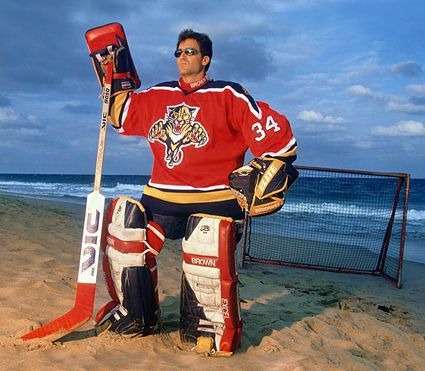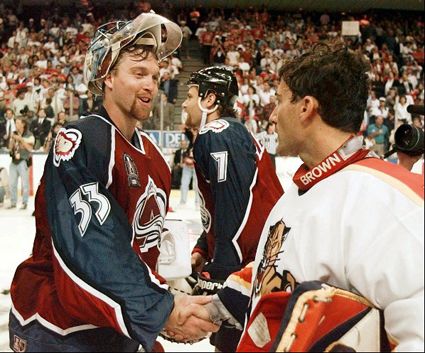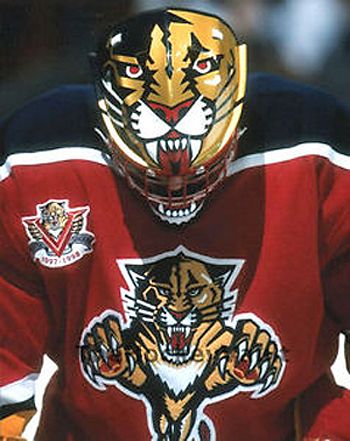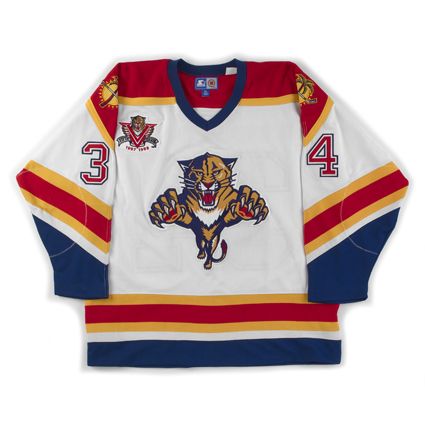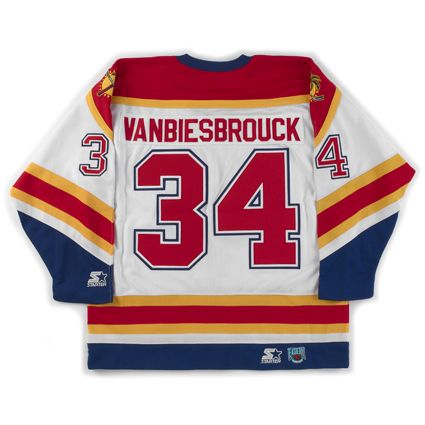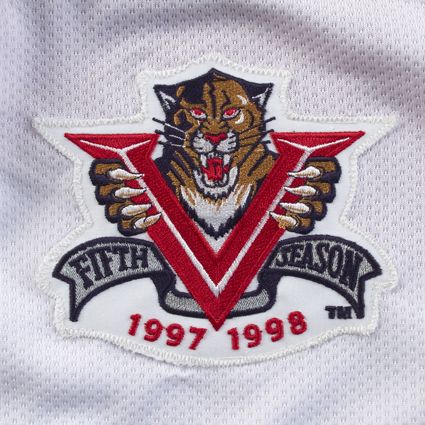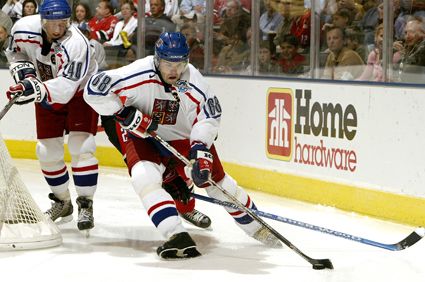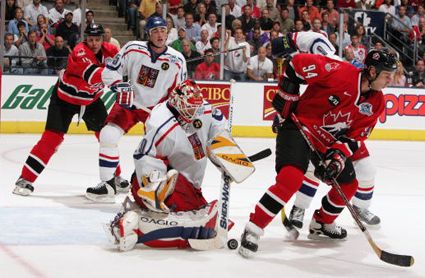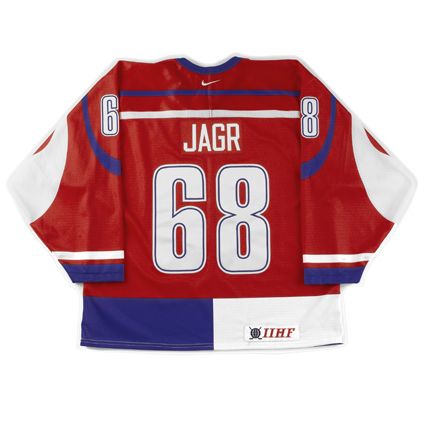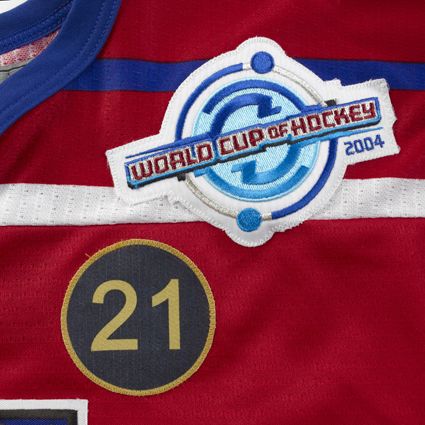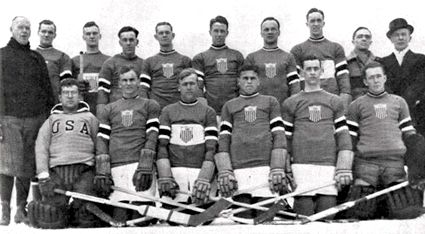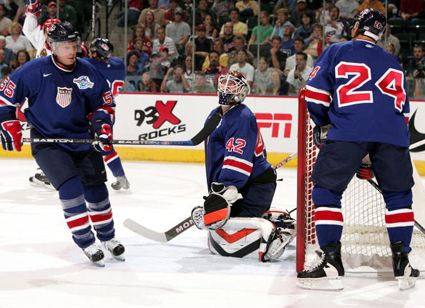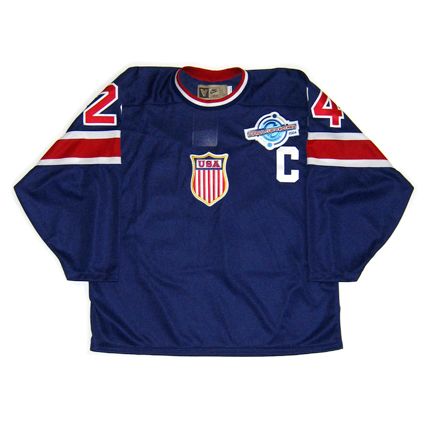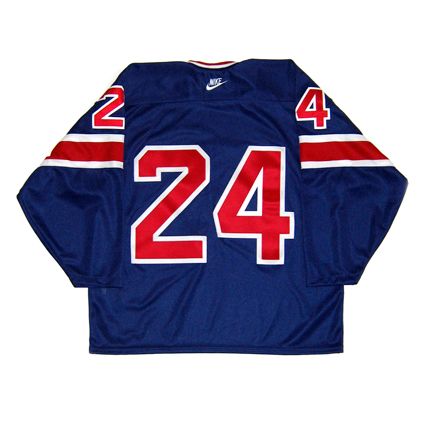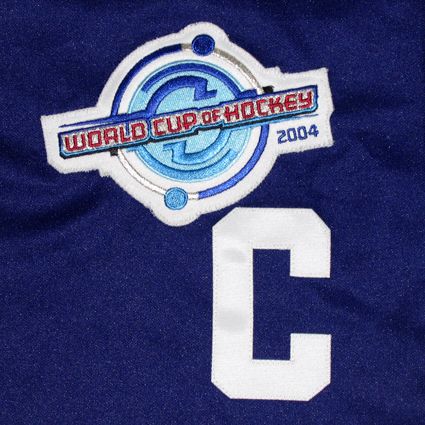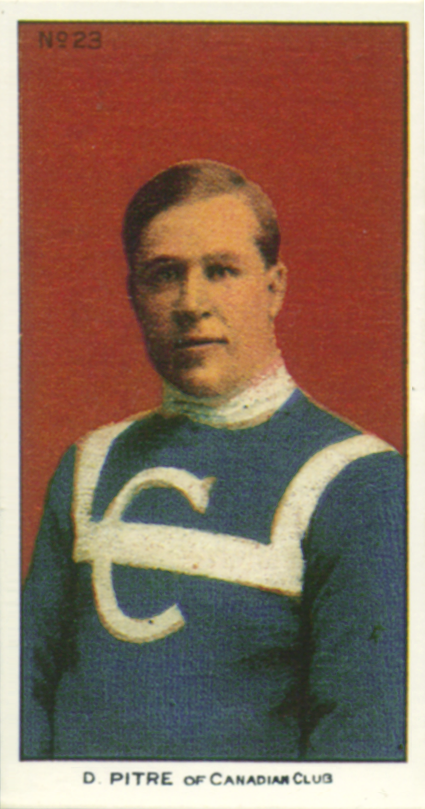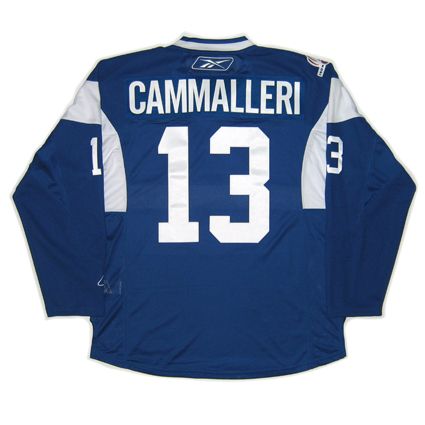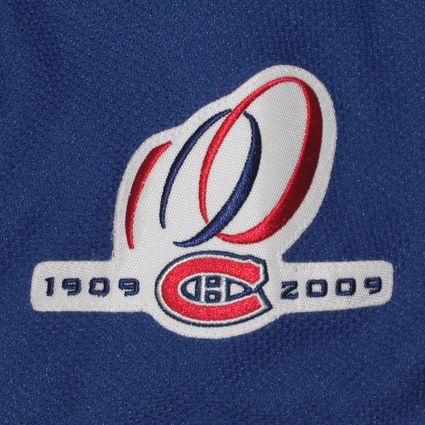When the Florida Panthers and Mighty Ducks of Anaheim participated in the 1993 Expansion Draft, the 24 other clubs were allowed to protect one goaltender, five defensemen and nine forwards. With the first choice, the Florida Panthers selected John Vanbiesbrouck, born on this date in 1963, who had spent the previous ten seasons with the New York Rangers.
Vanbiesbrouck while still with the Rangers
The Rangers, knowing that they would lose either Vanbiesbrouck or Mike Richter in the expansion draft, traded Vanbiesbrouck to the Vancouver Canucks for future considerations. The Canucks then left him exposed in the expansion draft when they protected Kirk McLean.
After a solid first season in which the Panthers posted a 33-34-17 record, missing the playoffs by just a single point, the second Panthers season was essentially a shortened duplicate, finishing with a 20-22-6 record again good for ninth place, again one point out of a playoff spot in the lockout reduced season.
Vanbiesbrouck adapted well to life in Florida
1995-96 however, would see the team reach unexpected heights in a memorable run through the playoffs. "The Year of the Rat" started on the night of the Panthers home opener, as a rat scurried across the Florida locker room, Scott Melanby "one-timed" the rat against the wall with his stick, killing it. Later that night Mellanby scored two goals, which Vanbiesbrouck called "a rat trick" with the addition of the earlier incident in the locker room.
During the next game, one clever fan threw a rubber rat on the ice in celebration of a goal and a phenomenon was born. By the Panthers third home game, 16 rats reached the ice in celebration. Eventually over 100 were tossed for a goal. Once the Panthers reached the heights of the playoffs, at one point over 3,000 rats rained down after every goal, stopping the games for an extended period of time as the ice, blackened with piles of rubber rats, was cleaned up.
 Vanbiesbrouck navigating the many celebratory rats
Vanbiesbrouck navigating the many celebratory rats
The Panthers finished the 1995-96 regular season fourth in the Eastern Conference and faced off against the Boston Bruins in the opening round of the playoffs, defeating them 4 games to 1. The Philadelphia Flyers were dispatched in six games before the Pittsburgh Penguins took them to a full seven games. Florida would win Game 7 on the road by a 3-1 score to move onto the Stanley Cup Finals versus the Colorado Avalanche, where they would fall in four games after a dramatic, scoreless Game 4 that would extend into a third overtime before being decided in favor of the Avalanche, giving Colorado the Stanley Cup.
Roy and Vanbiesbrouck meet following their epic duel in Game 4
Prior to the next season, the NHL passed a rule aimed squarely at the Panthers, due to the lengthy delays in cleaning up the rats, which would result in a delay of game penalty against the home team for excessive celebration of a goal by throwing objects on the ice.
After the Panthers trip to the finals, Vanbiesbrouck would play two more seasons in Florida, which included recording his 300th career victory.
Vanbiesbrouck's distinctive Panthers mask
He would then sign with the Flyers, where he would play for two seasons before heading back to New York, only this time with the Islanders. The Islanders would subsequently trade him to the New Jersey Devils late in the 2000-01 season, where he would spend the majority of his time as a backup to
Martin Brodeur. He would retire at the end of the season, only to return late in the following season to once more back up Brodeur before retiring for good.
Vanbiesbrouck's final NHL totals would show 882 games played, 374 wins and 40 shutouts with a goal against average of 2.97. He won the Vezina Trophy in 1986 while with the Rangers and his 374 wins and 40 shutouts are records for the most victories and shutouts by an American-born goaltender.
Vanbiesbrouck would also carve out a varied international hockey career, which included participation in the World Championships for the United States in 1982, 1983, 1985 and 1989. He would see action in both the 1987 and 1991 Canada Cups but was unable to compete in the 1996 World Cup of Hockey due to a shoulder injury after being named to the team. He would make the 1998 United States Olympic Team for the tournament held in Nagano, Japan. Following his career, he was named to the United States Hockey Hall of Fame in 2007.
Today's featured jersey is a Starter 1997-98 Florida Panthers John Vanbiesbrouck jersey, which features the Florida Panthers 5th Anniversary patch.
The lettering specification for the jerseys from 1993-94 to 1997-98 was one color straight lettering for the names, which was later changed to three color, vertically arched lettering from 1998-99 through 2005-06 after the departure of Vanbiesbrouck and his extended surname apparently allowed the Panthers design department more freedom with the lettering style of the jerseys!
Today's video highlights include round one of the 1996 playoffs versus the Boston Bruins.
The playoff highlights continue with the peak of the rat throwing, the Panthers first goal at home during Game 3 of the Stanley Cup Finals.
Next, a look at Game 4 of the Stanley Cup Finals, featuring the goaltending duel between Vanbiesbrouck and
Patrick Roy which stretched into a third overtime.
Here is an extended interview with Vanbiesbrouck on NHL Live, which covers a wide range of topics, beginning with his memories of playing the first modern NHL outdoor game, an exhibition in Las Vegas.


